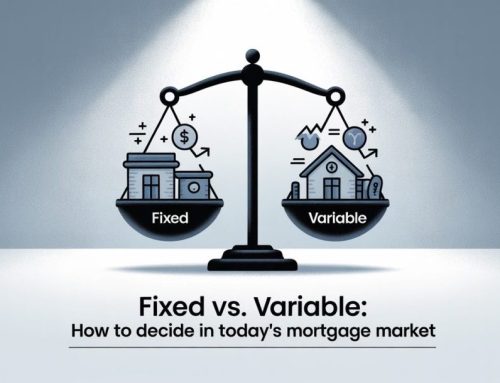If there is anything positive to come out of COVID, it’s the record low mortgage rates that it created. As the pandemic won’t last forever, neither will the rates, so rising rates shouldn’t come as a shock to any of us. As the economy recovers, we can expect rates to revert back to where they were before the whole thing started.
How Today’s Mortgage Rates Compare With Pre-COVID Rates
Even though fixed mortgage rates have increased by as much as 0.70% since the summer, they have still not reached pre-pandemic levels. In January 2020, the lowest 5 year fixed rates ranged from 2.74% – 2.99%, depending on your situation. Today’s lowest 5 year fixed rates range from 2.14% – 2.59%.
For anyone who had been shopping for mortgage rates from mid-2020 through summer of 2021, these rates sound high as we were used to looking at fixed rates starting with a one. While fixed rates have increased, they are still well below where they were pre-COVID.
With 80+% of the population vaccinated, and significantly lower new case counts, it was looking as though we were finally coming out of the pandemic. Economic growth was exceeding Bank of Canada expectations, which contributed to the rising fixed mortgage rates.
The Next Bank Of Canada Rate Increase
There was some speculation that the BOC may even move up their timeline for their projected rate increase. Some economists were predicting that this could come as early as January. If our economy continues chugging along a its current pace, then this would be a strong possibility.
That is, until we were hit with the Omicron COVID-19 variant.
As vaccines are considerably less effective against Omicron compared with other variants, our case counts have been rising fast. New restrictions are being implemented. The new Omicron variant brings more uncertainty, which is bad news for economic recovery. No one knows how this is going to unfold, not even leading economists, or the Bank of Canada themselves.
Uncertainty alone can have a big impact on mortgage rates, which could lead to the BOC to pushing out their plans. In their last rate announcement on December 8th, they doubled down on their prediction that their next increase will come at some point in the middle two quarters of 2022, which could mean an increase as early as April, or as late as September. What ends up happening is anyone’s guess, but at this stage it appears that a rate increase prior to April is an unlikely scenario. Anything can happen of course.
The Bank of Canada’s Influence On Mortgage Rates
It’s a common belief that the scheduled Bank of Canada rate announcements relate to all mortgage rates, both fixed and variable. While they can stimulate movement on both rate types, they are of particular interest to those with variable rate mortgages. While rare, it’s possible for fixed and variable rates to move in opposite directions. When the BOC made a rare unscheduled rate cut of 0.50% on Friday, March 13th, 2020, bond yields immediately started to soar. This resulted in some lenders increasing their 5 year fixed rates by as much as 0.25% within hours. Virtually all mortgage lenders followed within the next few business days. This is a rare case, but it can happen. For the most part, the Bank of Canada rate announcements relate to variable rate mortgages while fixed mortgage rates have a mind of their own.
Downward Pressure On Fixed Mortgage Rates?
Fixed mortgage rates are largely influenced by bond yields, which began their precipitous rise back to pre-pandemic levels late September, which then peaked on November 23rd. This was highest they’ve been since January 2020.
With the uncertainty created by the Omicron variant, bond yields have since dropped roughly 27% since their late November peak, therefore reversing upward pressure on fixed mortgage rates. While they have increased in the last few days, they are still roughly 20% lower than their 22 month high reached late November.
As it’s only been a few days, it’s hard to determine if the downward trend has reversed. 20% still represents a significant drop, however we have not yet seen any downward movement on fixed rates. For now, the yields have dropped enough to remove any upward pressure, but not enough to stimulate downward movement. If the downward trend were to continue, then decreases to fixed mortgage rates can be expected. For now, fixed mortgage rates remain stable.
Rising Mortgage Rates In 2022
The only reason why both fixed and variable rates are this low is because of the pandemic. While it seems like the pandemic is dragging on forever with one new variant after another, it will eventually come to an end. All pandemics do. Once it ends, rates will rise. It’s just a matter of when and by how much.
While Omicron may keep lower mortgage rates around for longer than originally expected, inflation remains a major concern. The Bank of Canada believes that the inflation concerns will be short lived, but there are some economists singing a different tune.
Regardless of whether were discussing economics, the housing or stock markets, politics, or even sports, there is always going to be someone taking the other side. No one can say for sure what is going to happen, and all we can do is speculate based on what we know today. As new information becomes available, the predictions will change accordingly. Time will tell and anything can happen.







